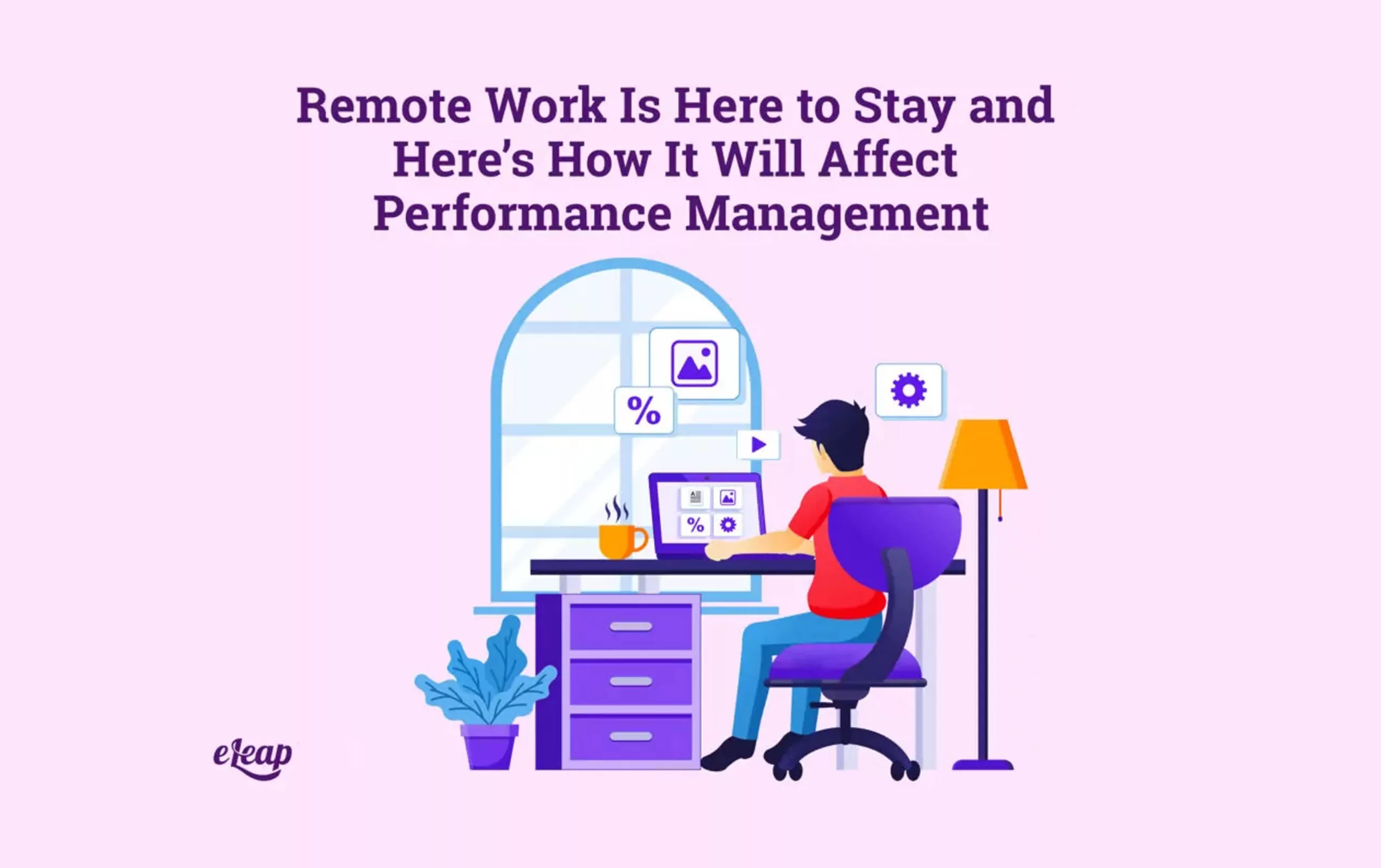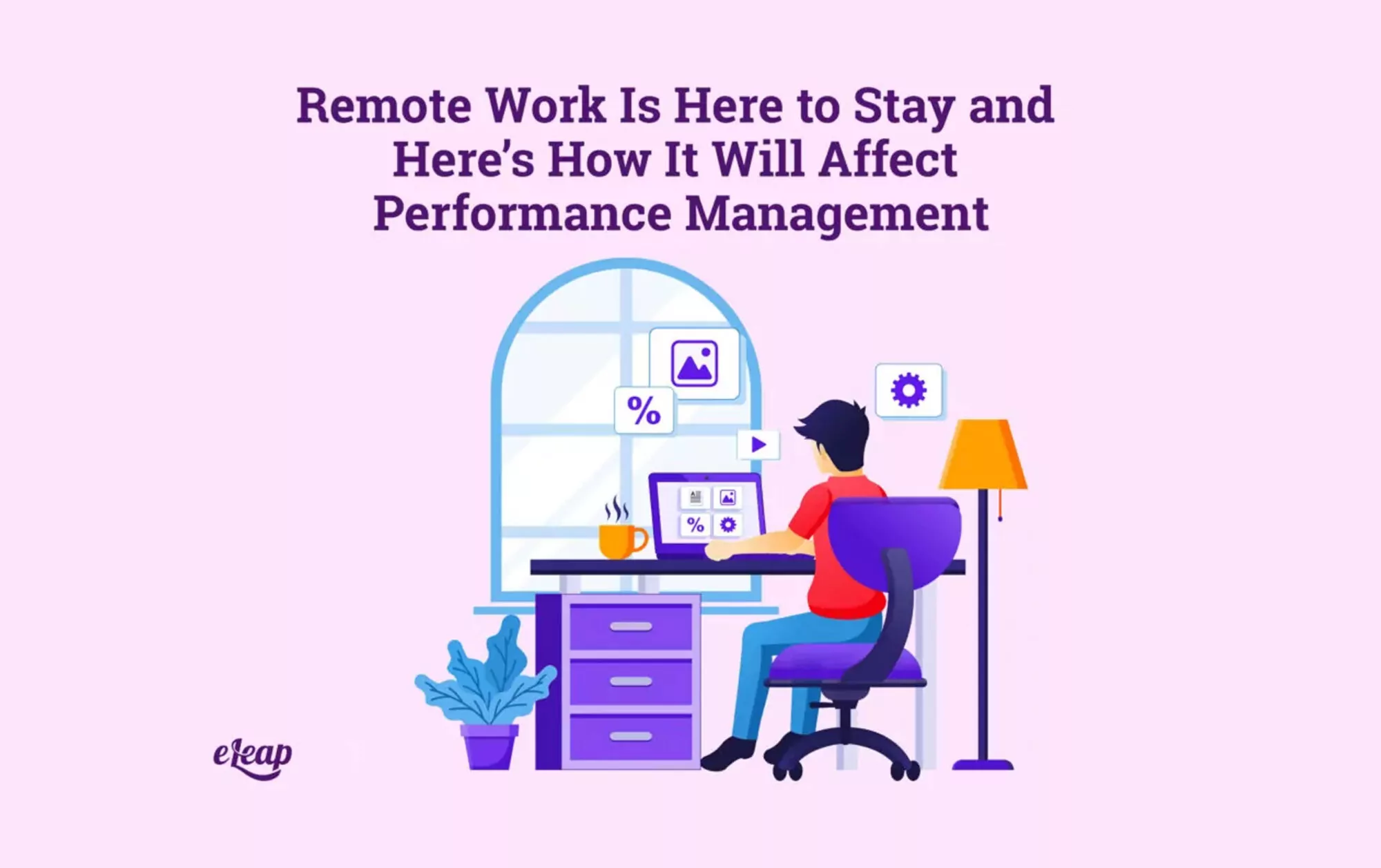Remote Work Is Here to Stay and Here’s How It Will Affect Performance Management

The changes COVID-19 has introduced to the world are immense. One of the most significant is the shift toward remote work. And, while some of the changes the pandemic created will fade over time, remote work is here to stay. That promises some interesting effects for performance management.

Is It Really Our Permanent New Normal?
For managers and leaders unsure about embracing remote work as the way forward, a survey conducted by Enterprise Technology Research found the number of permanent remote workers was set to double in 2021. Why, though? It all comes down to productivity.
An article published by Reuters in late 2020 explained that, “information technology decision-makers expect permanent remote work to double to 34.4% of their companies’ workforces in 2021, compared with 16.4% before the coronavirus outbreak, a result of positive productivity trends.” The article goes on to explain that throughout 1,000 CIOs interviewed, the results show that almost 50% saw dramatic productivity increases, with less than 29% reporting a decline in productivity.
While the focus of the survey was on IT companies, the fact is that almost every business has been affected by the trend. And, while it is good news for productivity, it adds some complications to the performance management process.
If Productivity Is High, What’s the Problem?
For some readers, the challenge here might not be so obvious. After all, if these companies are experiencing increases in productivity with remote work as compared to in-house rates, is there really a problem? That idea is based on a misunderstanding of what performance management is all about.
There’s an idea that performance management is all about bolstering productivity. It does focus on that to some extent, certainly. However, PM goes so much deeper. After all, productivity is just one metric of success.
Performance management focuses not just on employee productivity, but on their interactions with other employees, management performance, learning and development, and so much more. Even if it were solely focused on productivity, though, a permanent remote work shift would still introduce some interesting complications.
The Complications for Performance Management with Remote Working
For many of us, remote work is still new. While we might have been working remotely for months at this point, it still has some degree of unfamiliarity. In addition, many of us have been waiting for it to end, just holding our breath until we’re able to go back to the workplace.
That seems unlikely to occur for the majority of American workers and their managers. Because remote work will be permanent, it also means we must overcome some challenges that we might have ignored when it came to performance management while waiting for the situation to resolve.
Engagement Is More Important Than Ever
One of the things that will change moving forward is that there will be even more focus on employee engagement. Difficult to measure even at the best of times, engagement is a critical metric that affects company performance, employee retention, and so much more. The remote work world makes it even more difficult not just to measure engagement, but for employees to communicate their level of engagement with their teams.
One sure indicator of high engagement is participation in events. The more meetings and other events an employee attends, the more engaged they likely are (unless these are mandatory, in which case that metric goes out the window). Participation in meetings and events is an even better indicator, particularly when attendance is mandatory. Managers can look for employee interaction and participation such as being visible in video meetings, actively participating in discussions, and more to help measure engagement.
Focus On Work Done Not Time Spent
Time spent is a traditional measure of productivity. How many hours did an employee spend on task X? Did the employee spend enough time on task B? Is the team spending sufficient time on this initiative? However, those metrics largely go out the window in a remote work environment.
The reason for this is that employees often do not work a straight eight-hour shift when at home. They might start working very early in the morning, take a couple of hours off to have breakfast with the family, work several more hours, then take a longer lunch. Other employees might work primarily in the afternoons and evenings.
There is also the fact that many employees will get work done more quickly at home. They lack the same disruptions that would slow their pace in the office, and because they can set their own schedules, they can choose to work when they are at their most productive.
The result is that managers will need to shift their focus from hours worked to work produced. Sure, an employee might have only spent two hours on task B, but if the work was completed to expectations, what’s to argue about? The converse is also true, though. Some employees may require additional time for certain tasks, or may not be able to accomplish specific things during certain hours. Flexibility and a focus on getting work done not working specific hours will help managers measure actual performance.
Continuous Feedback
Finally, because of the inherent disconnect created by remote work, it will be crucial for managers to seek out continuous feedback. Do employees feel supported? Do they have the tools and systems they need to succeed? Do they require additional training or development?
Managers will also need to go deeper. During check-ins and one-on-ones, remote working makes it essential to seek out employee feedback on the job that managers and leaders are doing. What can managers or leaders do better? How can they support employees in their daily responsibilities?
The New Normal Doesn’t Need to Be Negative
Remote work has a lot of benefits, including helping organizations achieve better productivity. Yes, there are some potential downsides, but when managers are prepared for those and can enact plans to counter them, remote work can actually be a positive development that drives success.